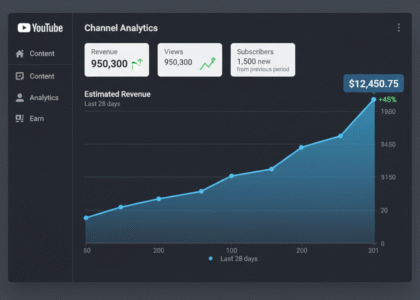Index funds have revolutionized the investment world, offering simplicity, diversification, and low fees that appeal to seasoned and novice investors alike. But as their popularity soars, some are asking: what are the risks of index funds, and are they too good to last? Let’s take a closer look at the hidden pitfalls, explore actionable strategies, and decide if they still deserve a spot in your portfolio.
What Are Risks of Index Funds, and Why Are They Popular?
1. Understanding the Basics Risks of Index Funds

Index funds are investment vehicles that track specific market indices, like the S&P 500. Instead of trying to beat the market, these funds mirror its performance.
- Benefits of Index Funds:
- Low management fees.
- Broad market exposure.
- Consistent, long-term returns.
2. The Appeal of Simplicity
Index funds take the guesswork out of investing, which is why they’ve become a favorite for those seeking a “set it and forget it” approach. However, their simplicity doesn’t mean they’re risk-free.
Internal Link: New to investing? Check out GetCashVibe’s ultimate guide to starting your financial journey.
The Hidden Risks of Index Funds
1. Market Volatility Amplification
Index funds track the entire market, which means they’re just as susceptible to downturns as they are to upswings. If the broader market crashes, so will your index fund.
- What This Means for You: While index funds diversify risk across sectors, they can’t protect you from systemic market risks.
2. Overconcentration in Top Stocks

Many indices, like the S&P 500, are weighted by market capitalization. This means a handful of the largest companies, such as Apple and Microsoft, dominate the fund’s performance.
- The Problem: If these companies falter, the impact on your index fund could be significant.
3. Limited Flexibility Risks of Index Funds
Index funds operate passively, following a predetermined index. This lack of active management means they can’t adjust to changing market conditions or avoid underperforming sectors.
External Link: Learn more about passive vs. active investing from Investopedia.
How to Mitigate the Risks of Index Funds
1. Diversify Beyond Index Funds
Index funds are excellent foundational investments, but they shouldn’t be your only holdings. Diversify with other asset classes like:
- Bonds for stability during market downturns.
- Real estate for tangible growth potential.
- Actively managed funds that adjust to market trends.
2. Monitor Your Portfolio Regularly

Index funds may be passive, but your approach shouldn’t be. Make it a habit to review your portfolio at least once a year. Look for:
- Imbalances in asset allocation.
- Overexposure to specific sectors or companies.
3. Keep an Eye on Fees
While index funds are known for low fees, some funds charge more than others. Always check the expense ratio before investing.
- Pro Tip: Aim for index funds with an expense ratio under 0.10% for optimal cost efficiency.
Internal Link: Not sure how to start? Explore GetCashVibe’s guide to building a diversified portfolio.
Why Index Funds Are Still a Valuable Investment
1. Long-Term Stability
Despite their risks, index funds have a track record of delivering steady returns over decades. For investors with a long time horizon, they remain a reliable choice.
2. Cost-Effective Investing

Low fees mean more of your money stays invested, compounding over time. This makes index funds particularly attractive for retirement savings.
3. Broad Market Exposure
By owning an index fund, you gain exposure to hundreds (or even thousands) of companies, reducing the risk associated with individual stocks.
Actionable Tips for Safe Index Fund Investing
- Know Your Goals: Define your investment timeline and risk tolerance before diving into index funds.
- Start Small: Begin with a broad-based fund, like one tracking the S&P 500 or a total stock market index.
- Rebalance Periodically: Adjust your holdings to maintain your desired asset allocation as markets shift.
- Use Dollar-Cost Averaging: Invest consistently over time to reduce the impact of market volatility.
External Resource: For more investing tips, visit The Motley Fool.
Conclusion
While the risks of index funds are real, they don’t overshadow the undeniable benefits these funds offer. With careful planning, diversification, and regular portfolio reviews, index funds can remain a cornerstone of a successful investment strategy.
Discover more tips on achieving financial freedom! Explore GetCashVibe today and take control of your finances!






